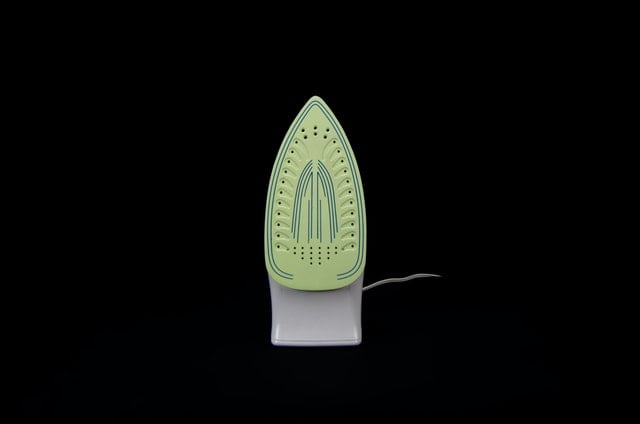
Pickleball has been gaining popularity among people of all ages and fitness levels. This fast-paced, fun, and exciting sport combines tennis, badminton, and ping pong elements, making it a unique and engaging experience for beginners and seasoned players. However, before you step onto the court, it’s vital to understand the basic rules of pickleball. Doing so ensures a fair and competitive game, from serving to smashing and scoring with precision.
In this article, we will dive into the essential rules of pickleball, including the court’s dimensions, serving techniques, and the importance of maintaining proper positioning throughout the game. So, whether you’re a novice looking to learn the ropes or a skilled player seeking a refresher, read on to master the basics of pickleball and enjoy this thrilling sport to the fullest.
What is Pickleball?
Pickleball is America’s fastest-growing sport, often played on a court similar to a badminton court. The court is divided into two sides, each with a non-volley zone known as the kitchen. The game can be played in singles or doubles to hit the pickleball over the net and into the opponent’s court, scoring points by making it difficult for the opposing team to return the ball.
A paddle and a perforated plastic ball, similar to a wiffle ball, are used to play Pickleball. The ball must be served diagonally, starting from the right side of the court. The serving team must let the ball bounce once on their side before hitting it. After the serve, both teams can hit the ball without letting it bounce as long as they are outside the non-volley zone. The ball must be hit over the net and land in the opponent’s court, and each team has to clear the net to continue the rally.
Pickleball Court and Equipment
Pickleball Court: A standard pickleball court features boundary lines that define the playing area. These lines help players determine if a ball is in or out of bounds. Additionally, the net is positioned at the center of the court, with the non-volley zone (often called the “kitchen”) extending seven feet on each side of the net. The non-volley zone is a unique aspect of pickleball, adding an exciting dimension to the game.
Pickleball Paddle: Players utilize a pickleball paddle, a key piece of equipment resembling an enlarged ping pong paddle but with slight variations in size and shape. Paddles can be crafted from various materials, such as wood, composite materials, or lightweight graphite. The choice of paddle material can significantly influence the paddle’s weight, durability, and power.
Pickleball Ball: The ball used in pickleball is a lightweight plastic ball designed with small holes, similar to a wiffle ball. The perforations aid in controlling the ball’s flight and make it easier for players to impart spin and precision. It is important to wear appropriate shoes and comfortable clothing when playing pickleball to ensure safety and ease of movement on the court.
5 Rules of Pickleball

Non-Volley Zone Rule
The non-volley zone, often affectionately called the “kitchen,” is a key element of pickleball that adds complexity and strategy to the game. This zone is a seven-foot area on both sides of the net, extending from the net to the court’s baseline. Players cannot hit the ball while standing in this zone unless it first bounces outside it. This rule drives players to engage in varied tactics to lure their opponents into the non-volley zone, creating opportunities for controlled, strategic plays.
Additionally, this rule forces players to be mindful of their positioning on the court, balancing their proximity to the net with their ability to defend against drop shots. Overall, this rule emphasizes the importance of precision and control in pickleball, as hitting the ball accurately and strategically is key to gaining an advantage in a match. The non-volley zone rule adds a unique dimension to pickleball, making it a sport requiring skill, strategy, and finesse.
Serving
Serving is a critical aspect of pickleball, and follows specific rules to ensure a fair and competitive game. The game commences with a serve, and the first serve is made from the right side of the court. It’s essential to note that all serve in pickleball must be executed underhand, meaning players cannot use an overhand or sidearm motion. This rule is in place to promote fairness and sportsmanship by preventing excessively powerful serves. After the first serve, subsequent serves must alternate between the right and left sides of the court, ensuring that both teams have an equal opportunity to serve from advantageous positions.
Additionally, the server must strictly hit the ball diagonally or on a diagonal serve pattern. This means that when serving, the ball should be hit diagonally to the opponent’s court, aiming to land it within the designated serving area. If the serve lands outside this area or hits the net, it is considered a fault, and the opposing team is awarded a point. This rule emphasizes accuracy in serving and keeps the game competitive by penalizing faulty serves.
Double Bounce Rule
One of the distinctive features that sets pickleball apart from other racket sports is the double bounce rule. According to this rule, both teams must allow the ball to bounce once on their respective sides before they can choose to volley it. This means that after the serve, the ball must first bounce on the receiving team’s side, and then it must bounce on the serving team’s side before any player can attempt a volley, which is hitting the ball in the air without letting it bounce.
The double bounce rule encourages longer rallies and strategic thinking. Players must carefully consider their positioning and timing to maximize their shots. It also levels the playing field, preventing a player or team with exceptional volleying skills from dominating the game. This rule emphasizes the importance of patience and placement in pickleball, making it a sport that rewards intelligence and finesse as much as raw power.
Faults
Pickleball has specific rules regarding faults, which occur when a player or team violates the game’s rules. Some common faults include:
- Serving Faults: Apart from serving diagonally and underhand, other common serving faults include stepping on or beyond the baseline during the serve, hitting the ball out of bounds, or failing to let the ball bounce once in the opponent’s court.
- Volleying From the Non-Volley Zone: A player or team cannot volley the ball from the non-volley zone, even if the ball is partially in the non-volley zone when it is struck. Doing so results in a fault.
- Stepping Into the Non-Volley Zone: A player must not step into the non-volley zone while volleying or attempting to play a ball. If any part of the foot is on the line or inside the non-volley zone when the ball is hit, it is considered a fault.
- Double Bouncing the Ball: A team can only volley the ball once it has bounced once on their side and once on the opposing side. Adherence to the double bounce rule results in a fault.
- Fault on the Serve: If the server faults (e.g., by hitting the net or landing the ball outside the designated serving area), it results in a point for the opposing team.
Let Rule
In some instances, a let may be called during a pickleball game. A let is a “do-over” or replay of a point, typically due to certain unexpected circumstances. Common situations that may result in a let include the ball hitting the net and still landing in the correct service area, a player serving out of turn, or any situation where external factors like interference from another court disrupt play. The let rule allows for a fair and sportsmanlike resolution to situations where the normal flow of the game is interrupted without penalizing any team.
Pickleball Scoring
Scoring in pickleball is done using a rally scoring system. Each side can only score points when they are serving. A point is awarded to the serving team if the receiving team commits a fault, such as hitting the ball out of bounds or into the net. The serving team continues to serve until they commit a fault; at this point, the other team gets a chance to serve. Here are the detailed pieces of information on how scoring works in pickleball.
Scoring 11 Points
Pickleball is typically played to score 11 points to win a game. Each time a team scores a point, their opponents have either failed to return the ball over the net or hit it out of bounds. The scoring process is straightforward: every successful rally results in a point being awarded to one of the two teams. This means the game advances in increments of one point at a time.
The 2-Point Margin Requirement
While the primary goal is to reach 11 points, a crucial aspect of pickleball scoring is the necessity for a 2-point margin to win the game. This 2-point margin rule is in place to prevent a game from ending in a very close score, such as 11-10. Without the 2-point margin rule, a single lucky shot could decide the game’s outcome. To win a game, a team must not only reach 11 points but also maintain a lead of at least 2 points over their opponents.
Reaching a “Deuce” at 10-10
A unique scenario in pickleball scoring occurs when both teams reach a score of 10-10. This situation is referred to as a “deuce.” At this point, the game becomes even more thrilling, as the teams must continue to play until one manages to secure a 2-point lead. For example, if the score stands at 10-10, the game will persist until one team reaches 12 points, ensuring they have that essential 2-point advantage.
Ending the Game
A game ends when one team successfully reaches the predetermined number of 11 points and maintains a 2-point lead over their opponents. This achievement marks the end of the game, and the victorious team can savor their success, while the opposing team can use the experience to refine their skills and tactics for future matches.
Key Strategies to Win a Pickleball Game

Placement and Control
One of the foundational strategies in pickleball is the deliberate placement and control of your shots. Instead of relying solely on power, players should focus on directing the ball precisely to strategic areas of the court. The goal is to create difficulties for the opposing team in returning the ball effectively. By varying the placement of shots and mixing up the pace, players can force their opponents into making errors, setting the stage for scoring points. This strategy emphasizes the importance of court awareness and shot selection.
Dinking
Dinking is a tactical approach focusing on hitting soft, low shots over the net. This strategy is instrumental in controlling the game’s tempo, conserving energy, and setting up opportunities for more aggressive shots. By keeping the ball low and close to the net, players can engage in extended rallies, wear down opponents, and expose vulnerabilities in their defense. Dinking can exploit weaknesses and create openings in the opposing team’s positioning.
Using the Non-Volley Zone to Your Advantage
The non-volley zone plays a critical role in the game. Players who master this aspect of the sport can gain a significant advantage. By strategically positioning themselves near the kitchen and forcing the opposing team to play shots from the back of the court, players can make quick, challenging volleys to return. Staying close to the kitchen allows players to react swiftly to incoming shots and maintain better court coverage, ultimately increasing their control over the game’s pace and direction.
Third-Shot Drop
The third-shot drop is a specialized technique specific to pickleball. Following the serve and return, the third shot typically involves a drop shot designed to land softly in the non-volley zone. This approach enables players to regain kitchen control and establish a favorable offensive position. Executing the third-shot drop effectively necessitates precise placement and excellent control to prevent the opposing team from mounting a strong attack.
Lobbing
Lobbing is a strategic technique that involves hitting high, deep shots that travel over your opponents’ heads and toward the back of the court. Lobs can reset a point, buy time for repositioning, or disorient opponents by taking them out of their comfort zone. Successfully employing this strategy demands precision in trajectory and timing and an understanding of when to employ it to maximize its effectiveness.
Poaching
In doubles play, poaching involves one player moving quickly to intercept a shot intended for their partner. This strategy can disrupt the opposing team’s rhythm and create opportunities for winners. However, poaching necessitates seamless communication with your partner to avoid collisions and ensure both players are on the same page. It is a tactic that requires a well-coordinated partnership to be executed effectively.
Deception
Incorporating deception into your shots can be a powerful strategy. It involves faking shots or disguising your intentions to keep your opponents guessing and off-balance. For example, you might appear to set up for a powerful shot but execute a soft one instead, catching your opponents off guard. Deception also encompasses disguising the direction of your shot until the last moment, making it difficult for your opponents to anticipate your moves.
Footwork
Effective footwork is the backbone of any successful pickleball strategy. Quick, precise foot movements are essential for reaching shots, maintaining a strong court position, and reacting to your opponent’s actions. Strong footwork allows you to cover the court efficiently, execute your shots with balance, and be in the right place at the right time.
Communication and Teamwork
In doubles play, effective communication and teamwork are the cornerstones of success. Both players need to communicate effectively to coordinate their movements and shots. Players can cover more ground on the court by working cohesively and anticipating each other’s actions. A united front in doubles play ensures a solid defensive and offensive strategy. It also minimizes confusion and overlapping, enabling players to maximize their court coverage and capitalize on opportunities.
Mental Toughness
Staying mentally tough and composed during matches is vital in pickleball. Managing your emotions, maintaining a positive attitude, and focusing on your game plan, even when facing adversity, can help you make better decisions and perform at your best. Mental resilience can be the difference between victory and defeat in high-pressure situations.
Common Mistakes to Avoid in Pickleball
- Hitting the ball out of bounds: One common mistake in pickleball is hitting the ball out of bounds. Focusing on accuracy and control when hitting the ball is essential to ensure it stays within the court’s boundaries. Hitting the ball out of bounds results in a lost point and gives an advantage to the opposing team.
- Not letting the ball bounce before hitting: Another mistake is not following the double bounce rule. It is essential to let the ball bounce once on each side before hitting it in the air. Failing to do so results in a fault, and the opposing team gains a point. Adhering to this rule ensures fair gameplay and allows for longer rallies.
- Being too aggressive with volleys: While volleys can be powerful shots in pickleball, being overly aggressive can lead to mistakes. It is important to maintain control and aim for strategic placement rather than purely relying on power. Players can maximize their chances of success by being patient and choosing the right moments to execute volleys.
Frequently Asked Questions
Q: How is pickleball played?
A: Pickleball is played with two or four players. The game’s objective is to score points by hitting the ball over the net and into the opponent’s court without them being able to return it. The ball must be hit over the net and into the opponent’s court before it bounces twice.
Q: What are the basic rules of pickleball?
A: The basic rules of pickleball include the following:
- Each side has a maximum of two hits per side before the ball must be hit over the net and into the opponent’s court.
- If a ball bounces twice before being hit by the opponent, they lose the rally.
- A serve must be made diagonally, and the first must be made underhand.
- The server must keep at least one foot behind the baseline.
- The non-volley zone, also known as the kitchen, is a 7-foot area on each side of the net where players are not allowed to hit the ball in the air.
Q: What is the double bounce rule in pickleball?
A: The double bounce rule in pickleball states that both the serving and receiving teams must let the ball bounce once on each side before attempting to hit it in the air. After the first two bounces, the ball can be hit on the fly.
Q: What are some essential tips to learn pickleball?
A: Some basic tips to learn pickleball include:
- Familiarize yourself with the rules of pickleball.
- Practice your serve to ensure accuracy and consistency.
- Position yourself strategically on the court to maximize your chances of returning shots.
- Stay out of the non-volley zone unless you hit a ball that bounces.
- Focus on your footwork to improve your agility and ability to reach shots.
Q: How can I improve my pickleball serve?
A: To improve your pickleball serve, practice the following tips:
- Start with an underhand serve to ensure accuracy.
- Focus on a smooth, controlled motion to generate power.
- Aim for the desired location on the opponent’s court.
- Practice serving from different positions on the court to become versatile.
- Get feedback from more experienced players to refine your technique.
Q: Can I play pickleball indoors?
A: Yes, pickleball can be played both indoors and outdoors. There are indoor pickleball courts available in many sports facilities and community centers.
Q: Can I play pickleball alone?
A: While pickleball is typically played with two or four players, it is possible to play alone for practice. You can hit the ball against a wall and practice your shots and footwork.
Conclusion
In conclusion, pickleball offers an exciting and dynamic way to stay active and engaged. Learning how to play the game involves mastering the five basic rules of pickleball, including serving, standing in the kitchen, and understanding the rules for beginners. With the serve being the foundation of each rally, players must adhere to the official rules outlined in the USA Pickleball rulebook. To start a point, you stand behind the baseline, and it all begins with a serve.
Remember, you must win by at least two points, and your chance to serve switches with each score. The game’s essence lies in maintaining a delicate balance between power and precision, ensuring the ball lands in the kitchen and stays in play. Whether you play singles or doubles, the net on both sides beckons you to step into the kitchen and play the ball strategically. With the purpose of the serve being to get the ball into play, every point is scored by the serving team.
For more insightful articles like this, subscribe to our community at the Family Hint today!




